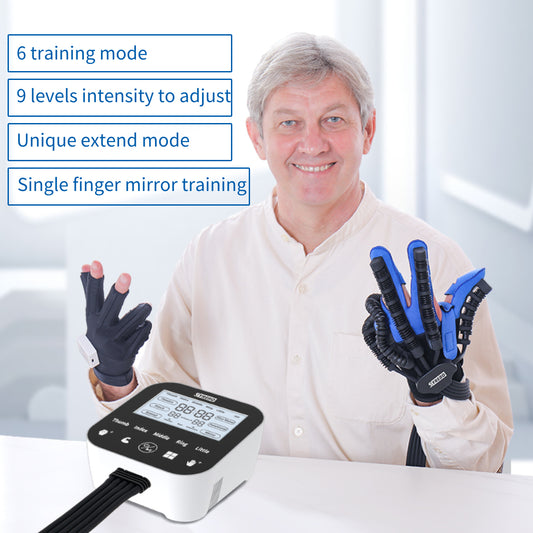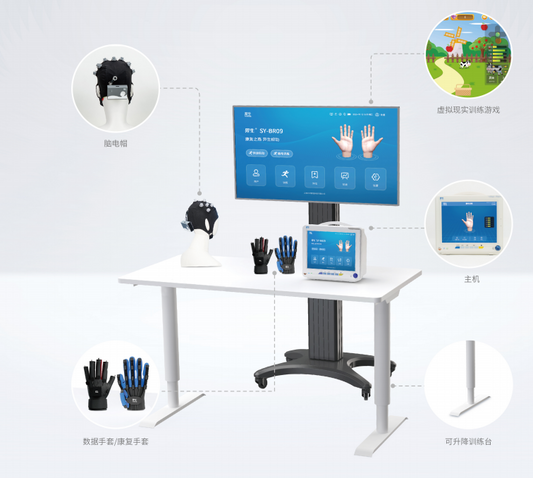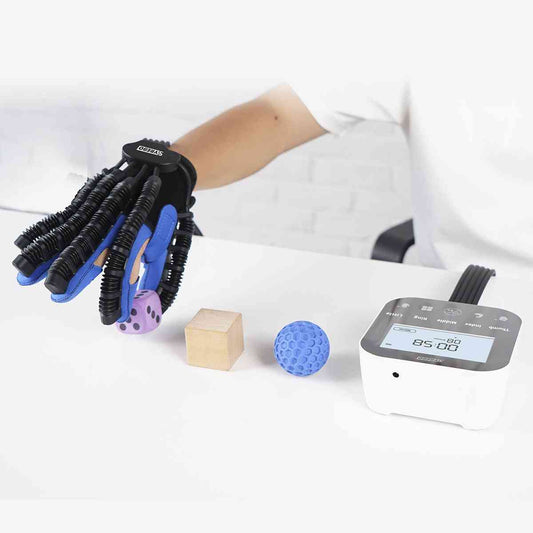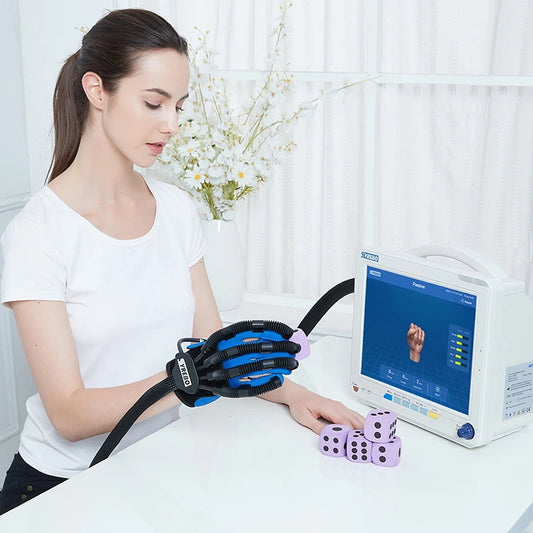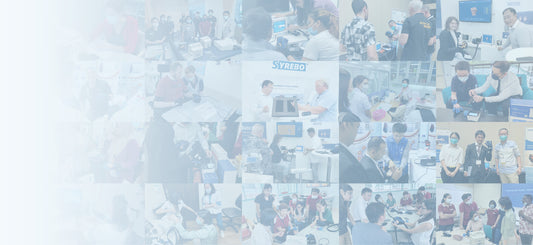What is Cerebral Palsy? | Symptoms, Causes, Treatment
What is Cerebral Palsy?
Cerebral palsy (CP) is a group of disorders that affect a person's ability to move, maintain balance, and maintain posture. CP is the most common movement disorder in childhood. Cerebral means related to the brain. Paralysis means muscle weakness or problems using muscles. Cerebral palsy is caused by abnormal brain development or damage to the developing brain that affects the person's ability to control muscles.
The symptoms of CP vary from person to person. People with severe CP may need special equipment to walk or may not be able to walk at all and may need lifelong care. On the other hand, people with mild CP may walk a little awkwardly but may not need any special help. CP does not get worse over time, but the exact symptoms can change over the course of a person's life.
All people with CP have problems with movement and posture. Many also have associated conditions such as mental retardation, seizures, vision, hearing, or speech problems, spinal changes (such as scoliosis), or joint problems (such as contractures).
What Are the 4 Stages of Cerebral Palsy?
Doctors categorize CP based on the main types of movement disorders involved. Depending on which areas of the brain are affected, one or more of the following movement disorders can occur:
- Muscle stiffness (spasticity)
- Uncontrollable movements (dyskinesia)
- Poor balance and coordination (ataxia)
There are four main types of CP:
Spastic Cerebral Palsy
Spastic CP is the most common type of CP. Spastic CP affects about 80% of people with CP.
People with spastic CP have increased muscle tone. This means that their muscles are stiff, and therefore their movements can be awkward. Spastic CP is usually described by which parts of the body are affected:
- Spastic diplegia/diparesis: In this type of CP, muscle stiffness is seen mainly in the legs, with the arms being less affected or not affected at all. A person with spastic paraplegia may have difficulty walking due to tight muscles in the buttocks and legs that cause the legs to come together, turn inward, and cross at the knees (also known as scissor kicks).
- Spastic hemiparesis/hemiplegia: This type of CP affects only one side of the person's body; usually the arm is more affected than the leg.
- Spastic quadriplegia/quadriparesis: Spastic quadriplegia is the most severe type of spastic cord injury, affecting the limbs, trunk, and face. People with spastic quadriplegia are usually unable to walk and often have other developmental disabilities such as mental retardation, seizures, or problems with vision, hearing, or speech.
Dyskinetic Cerebral Palsy (also includes athetoid, choreoathetoid, and dystonic cerebral palsies)
People with dyskinetic cerebral palsy have problems controlling the movements of their hands, arms, feet, and legs, making it difficult to sit and walk. Their movements are uncontrollable and may be slow and twisting or fast and jerky. Sometimes the face and tongue are also affected, and the patient has difficulty sucking, swallowing, and speaking. Muscle tone in dystonia can change not only from day to day (ranging from too tight to too loose), but even within a day.
Ataxic Cerebral Palsy
People with ataxic polio have problems with balance and coordination. They may be unsteady on their feet when walking. They may have difficulty completing quick movements or movements that require a lot of control, such as writing. They may have difficulty controlling their hand or arm when reaching for something.
Mixed Cerebral Palsy
Some people have symptoms of more than one type of CP. The most common type of mixed CP is spastic-dyskinetic CP.
Symptoms
The symptoms of cerebral palsy vary widely. In some people, cerebral palsy affects the whole body. Others may have symptoms that affect only one or two limbs or one side of the body. General symptoms include movement and coordination, speech and eating, developmental problems, and others.
Movement and coordination
Symptoms of movement and coordination may include:
- Muscle stiffness and hyperreflexia, or spasticity. This is the most common motor symptom of cerebral palsy.
- Changes in muscle tone, such as being too stiff or too loose.
- Muscle stiffness but normal reflexes, called rigidity.
- Lack of balance and muscle coordination is called ataxia.
- Uncontrollable jerking movements are called tremors.
- Slow, writhing movements.
- Favoring one side of the body, such as reaching with only one hand or dragging one leg while crawling.
- Difficulty walking. People with cerebral palsy may walk on their toes or crouch when walking. They may also walk like scissors with their knees crossed. They may also have a wide gait or walk unsteadily.
- Problems with fine motor skills, such as buttoning clothes or picking up utensils.
Speech and eating
These symptoms related to speech and eating may occur:
- Delays in speech development.
- Trouble speaking.
- Trouble with sucking, chewing, or eating.
- Drooling or trouble swallowing.
Development
Some children with cerebral palsy have these symptoms related to development:
- Delays in reaching motor skills milestones, such as sitting up or crawling.
- Learning disabilities.
- Intellectual disabilities.
- Delayed growth, resulting in a smaller size than would be expected.
Other symptoms
Brain damage can lead to other neurological symptoms, such as
- Seizures, which are a symptom of epilepsy. Children with cerebral palsy may be diagnosed with epilepsy.
- Hearing impairment.
- Visual impairment and changes in eye movements.
- Sensory disturbances such as pain or touch.
- Bladder and bowel problems, including constipation and incontinence.
- Mental health conditions such as emotional conditions and behavioral problems.
The brain condition that causes cerebral palsy does not change over time. Symptoms usually do not get worse with age. However, certain symptoms may become more or less noticeable as the child gets older. Muscle shortening and muscle stiffness may worsen if not treated aggressively.
What are the Main Causes of Cerebral Palsy?
Cerebral palsy is caused by a problem with the brain that happens before, during, or soon after birth.The brain can either be damaged or not develop normally, although the exact cause is not always clear.
Problems before birth
Cerebral palsy is usually caused by problems that affect the development of the brain while the baby is growing in the womb.
These problems include:
- Damage to parts of the white matter of the brain, which may be caused by a reduced blood or oxygen supply, is known as periventricular leukomalacia (PVL). Learn more about periventricular leukomalacia from Scope.
- Infections during pregnancy, such as cytomegalovirus, rubella (German measles), chickenpox, or toxoplasmosis
- Stroke: bleeding in the fetal brain or cutting off the blood supply to the brain
- Head injury to the fetus
Problems at or after birth
Cerebral palsy can sometimes be caused by damage to the baby's brain at birth or soon after birth. For example, it may be due to:
- Temporary lack of oxygen to the brain during a difficult birth (asphyxia)
- a brain infection, such as meningitis
- a severe head injury
- Suffocation or near-drowning, which deprives the brain of oxygen
- Low blood sugar (hypoglycemia)
- Stroke
Increased risk
There are certain conditions that increase the risk of a baby being born with cerebral palsy, including:
- Premature birth (before 37 weeks of pregnancy): babies born at 32 weeks of pregnancy or earlier are at particularly high risk of developing this condition.
- Having a low birth weight
- Being part of a multiple birth, such as twins or triplets
- The mother smoked, drank a lot of alcohol, or took drugs such as cocaine during pregnancy
If your baby is at a higher risk of developing cerebral palsy, your doctor may recommend that he receive regular checkups in the first two years of life to look for signs of cerebral palsy.
Cerebral palsy life expectancy
The life expectancy of a person with cerebral palsy will vary depending on the severity of their symptoms. The severity of cerebral palsy is generally categorized as mild or severe, depending on the extent of the brain damage and the presence of complications.
Life expectancy for people with mild cerebral palsy
Life expectancy for people with mild cerebral palsy may be similar to that of people without mild cerebral palsy.
According to one article, a two-year-old child with mild cerebral palsy has a 99% chance of living to the age of 20. In addition, according to a study of people with cerebral palsy, more than 80% of people with cerebral palsy had a life expectancy of 58 years or more.
Life expectancy for people with severe cerebral palsy
People with severe cerebral palsy may have a shorter life expectancy than those with mild cerebral palsy. Individuals with severe cerebral palsy often have severe limitations in mobility and/or intelligence. As a result, these patients have a 40% chance of living to the age of 20.
Statistically, the mortality rate for young children with severe cerebral palsy who have multiple impairments has decreased since 1990. Most children with severe cerebral palsy reach adulthood.
This study analyzed patients with cerebral palsy to determine their overall disability score (DISAB). DISAB takes into account the severity of motor and cognitive impairments, active epilepsy, and bilateral blindness and/or deafness. Patients with lower disability scores (DISAB between 1 and 5) were more likely to survive than those with higher disability scores (DISAB between 6 and 12).
Are Cerebral Palsy Symptoms Painful?
Constant or recurring pain is a very common physical problem for people with cerebral palsy (CP) that usually begins in childhood but becomes more intense and frequent as the life cycle progresses. Here are some facts about CP pain and what can be done to alleviate this chronic problem. Adults with cerebral palsy may have other health considerations to keep in mind and discuss with their healthcare provider.
What causes CP pain?
- The most common cause of chronic pain in patients with CP is the lack of a proper clinical diagnosis.
- Common sources of pain, such as migraine headaches, constipation, or gynecological disorders, can be erroneously attributed to CP, disregarded, tolerated, or allowed to persist without proper evaluation and treatment.
- Uncommon conditions that cause pain, such as autoimmune diseases, tumors, or infections (e.g., Lyme disease), may not be considered in patients with CP.
- Strong or prolonged muscle contractions (e.g., spastic CP) may cause pain, as may transient muscle spasms (charley horse).
- Spastic, stiff, or dystonic muscles place excessive, repetitive, and atypical stress on the joints, causing wear and tear on the joint surfaces, which can lead to inflammation (arthritis) and the exposure of painful fibers.
- There may be no specific source of pain evident, but the nociceptors themselves are dysfunctional (this is known as neuropathic pain).
What Is the Treatment for Cerebral Palsy
The main treatments for cerebral palsy are medications, therapy, and surgery. The goal of cerebral palsy treatment is to control symptoms, relieve pain, and maximize independence for a long and healthy life. Cerebral palsy treatment is tailored to each person's specific symptoms. The type of cerebral palsy treatment needed can depend on:
- Co-occurring conditions
- Level of impairment
- Location of movement problems
- Type of cerebral palsy (spastic, athetoid, ataxic, hypotonic, and mixed)
Physical therapy for cerebral palsy
Physical therapy usually begins at an early age and focuses on improving independent motor function. The type of physical therapy depends on the specific motor problems and symptoms of the child with cerebral palsy.
Physical therapy can improve:
- Balance
- Flexibility
- Mobility
- Posture
- Strength
When a child begins physical therapy, the physical therapist will first assess their motor skills and overall mobility to determine the best treatment plan. The physical therapist then develops a treatment plan based on the child's needs, which includes strength training, stretching, and muscle relaxation techniques.
Exercise equipment used during physical therapy includes weights, resistance bands, balance balls, and machines that improve muscle tone. Hot and cold packs are often used to help relax and heal muscles.
The goal of the physical therapist is to treat symptoms as quickly as possible to avoid painful future complications such as scoliosis and contractures (shortening of tendons and muscles common in spastic cerebral palsy). Strength training is helpful for children with dyskinetic cerebral palsy who have muscle relaxation and hypotonia.
Rehabilitation Glove
- Feasible application of rehabilitation theory: The SYREBO hand rehabilitation glove combines flexible robotics and neuroscience, integrating active and passive training and covering all stages of hand rehabilitation for cerebral palsy patients.
- More hand rehabilitation training modes: The C12 SYREBO Robotic Glove has 6 training modes: passive training, finger mirror training, pinch grip training, extension training, fine motor training, and functional training, covering all stages of hand rehabilitation for cerebral palsy patients.
- Robotic Glove with More Power for People with Cerebral Palsy: The SYREBO Hand Rehabilitation Robotic Glove has three pumps to help people with cerebral palsy drive flexion and extension with more power and 9 levels of adjustable strength.
- Advanced Finger Mirror Training: The SYREBO Hand Rehabilitation Robotic Glove innovates the glove's design by increasing the number of air pumps and the sensitivity of the sensors, which allows for individual control of mirror training of individual fingers, providing finer control of finger movement and better helping stroke patients regain the fine functions of their hands, and the C12 Robotic Glove comes with a wireless data glove for greater ease of use.
- Unique Static Stretching: The Syrebo Hand Rehabilitation Glove has an advanced and safe static stretching mode that reduces muscle tension and increases the range of hand and finger movement, mimicking the stretching exercises of a rehabilitation therapist, which can better help cerebral palsy patients recover their finger function. Click here to learn more.
Occupational therapy for cerebral palsy

Occupational therapy helps children with cerebral palsy improve their ability to perform daily tasks. The therapist assesses the child's fine motor skills, perceptual abilities, and oral-motor skills to develop a treatment plan. Occupational therapy can help with the following activities:
- Brushing hair
- Brushing teeth
- Zipping a zipper
- Opening jars
- Picking up small objects
- Using scissors
- Writing
Occupational therapy allows children to practice these movements to help them live independently. Skills such as positioning, reaching, grasping, and releasing are often practiced in occupational therapy.
Many children with cerebral palsy have sensory impairments, which can make it difficult to develop motor skills, and occupational therapists help children overcome these impairments. Occupational therapy for children also usually includes some form of play to keep them motivated and engaged. Click here to learn more.
Speech Therapy for Cerebral Palsy

A brain injury affects the part of the brain that controls speech and oral muscles. Many people with cerebral palsy develop a speech disorder as a result of their brain injury. Speech therapy can teach children how to communicate more effectively. A speech therapist can diagnose speech problems and help improve speech and other oral skills.
Speech therapy can also address issues that affect a child's ability to eat. Many children with cerebral palsy struggle to maintain a healthy weight because they have difficulty chewing or swallowing food. Oral motor exercises can improve the ability to chew and swallow food. Click here to learn more.
Cerebral Palsy Medications
People with cerebral palsy are often prescribed a variety of medications to help control the condition. Medications can help control motor problems and secondary conditions caused by cerebral palsy.
The types of medications used to treat these conditions will vary depending on the child's symptoms. Your doctor will determine which medications are effective in treating your child's symptoms and preventing unwanted side effects.
Cerebral palsy medications may be used to treat the following conditions:
- Acid reflux
- Urinary and fecal incontinence
- Involuntary movements
- Breathing disorders
- Seizures
- Spasms
- Tremor
Cerebral Palsy Prevention Recommendations
Cerebral palsy generally cannot be prevented, but the risk can be reduced. If you are pregnant or planning to become pregnant, you can take the following steps to minimize pregnancy complications:
- Make sure you are immunized. Vaccination against diseases such as rubella can prevent infection. It's a good idea to make sure you're fully vaccinated before you become pregnant.
- Take care of yourself. The healthier you are when you are pregnant, the less likely you are to develop an infection that causes cerebral palsy.
- Schedule ongoing prenatal care early. Make regular appointments with a health care professional during your pregnancy. Proper prenatal care can reduce health risks for you and your unborn baby. Regular appointments with a health care professional can help prevent preterm labor, low birth weight, and infections.
- Avoid alcohol, tobacco, and illegal drugs. These increase the risk of cerebral palsy.
Cerebral palsy from brain damage in childhood is extremely rare. Practice good general safety habits. Provide your child with a car seat, a bicycle helmet, safety rails on the bed, and proper supervision to prevent head injuries.


